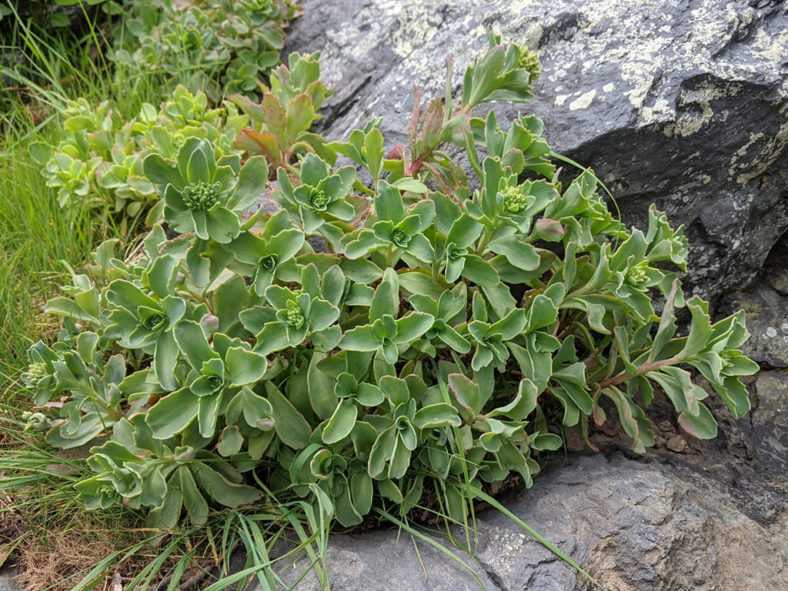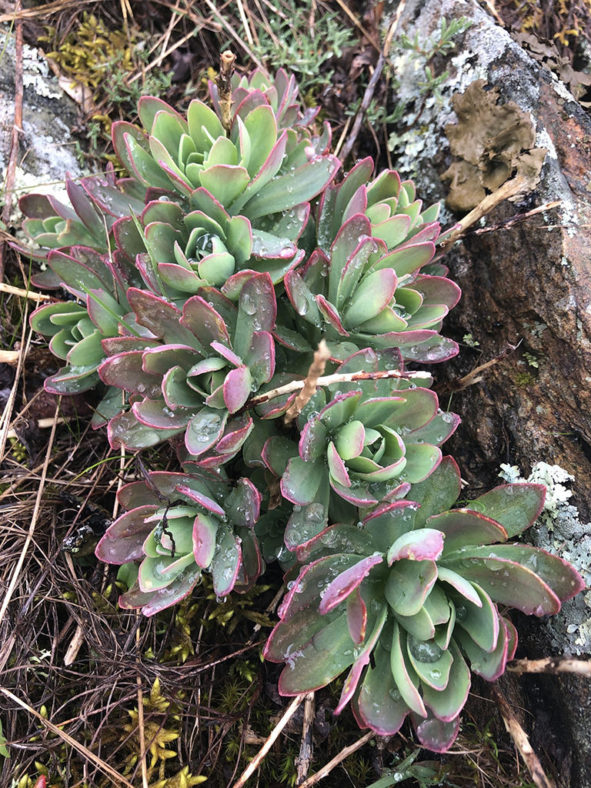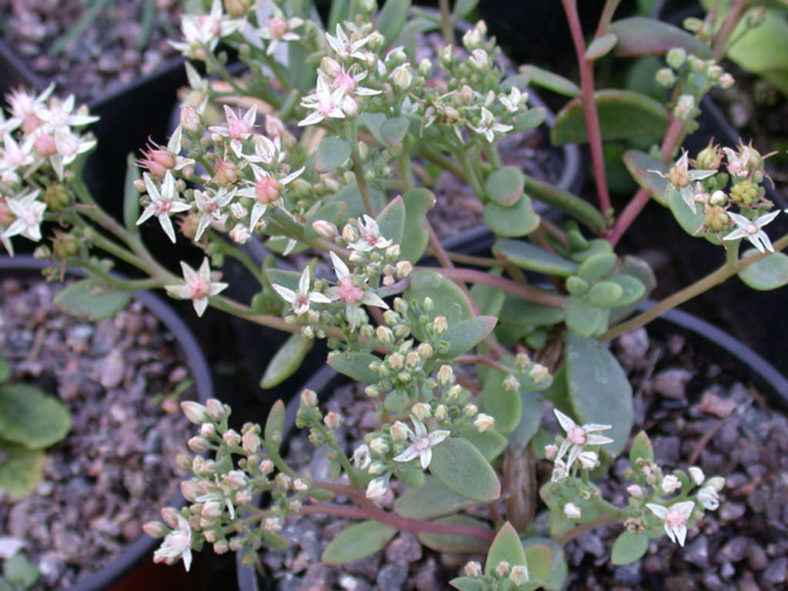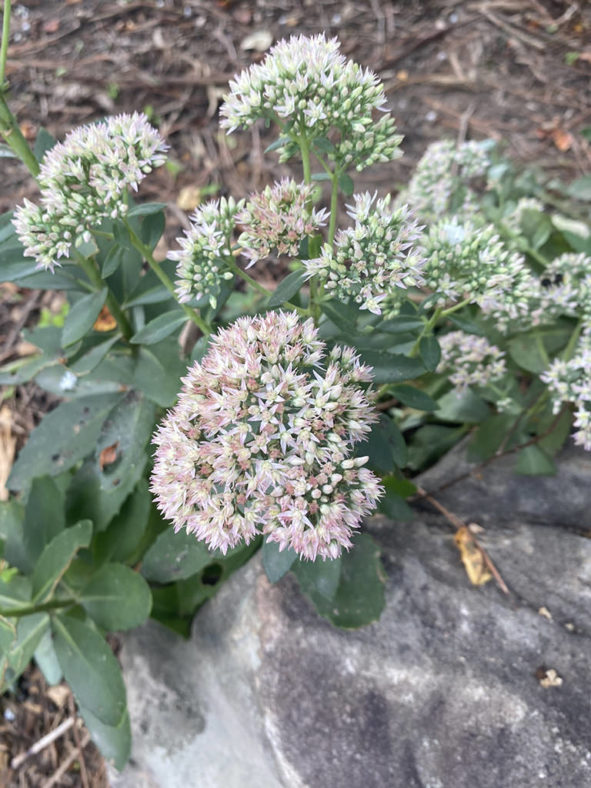Scientific Name
Hylotelephium telephioides (Michx.) H.Ohba
Common Name(s)
Allegheny Stonecrop, American Live Forever, American Orpine, Live-forever, Live-forever Stonecrop, Wild Live Forever
Synonym(s)
Anacampseros telephioides, Sedum telephioides
Scientific Classification
Family: Crassulaceae
Subfamily: Sempervivoideae
Tribe: Telephieae
Genus: Hylotelephium
Etymology
The specific epithet "telephioides" means "resembling Telephium" and refers to the likeness of this species to the members of the genus Telephium.
Origin
Hylotelephium telephioides is native to the United States (from Georgia to Illinois and New York) and Canada (Ontario).
Description
Hylotelephium telephioides, formerly known as Sedum telephioides, is a succulent plant with a short rootstock that produces a cluster of fleshy stems with green or yellow-green, often glaucous leaves. The stems can grow up to 3.3 feet (1 m) tall. The leaves are alternate or opposite, elliptic with irregular teeth along the margins, and can measure up to 4 inches (10 cm) long and 1.6 inches (4 cm) wide.
The flowers are star-shaped, appear in dense clusters in fall, and can reach up to 0.6 inches (1.5 cm) in diameter. They have white or pink-tinged to pale pink petals with a greenish keel and purplish-red anthers.
Hylotelephium telephioides is similar to Hylotelephium spectabile and Hylotelephium telephium, both distinguished by their significantly darker pink flowers.

How to Grow and Care for Hylotelephium telephioides
Light: This succulent prefers full sun. It tolerates light to partial shade in hot summer climates but will produce weak, floppy growth when grown in too much shade. Plant your H. telephioides in an area of your garden that gets 6 hours of sunlight daily.
Soil: H. telephioides does not need rich soil but requires excellent drainage. Choose a commercial potting mix for succulents, or make one yourself.
Hardiness: This plant has a tolerance to heat and drought and is cold-hardy, making it a popular outdoor succulent. H. telephioides can withstand temperatures as low as -20 to 30 °F (-28.9 to -1.1 °C), USDA hardiness zones 5a to 9b.
Watering: The best way to water H. telephioides is to use the "soak and dry" method. Get the soil completely wet, and then wait until it is dry before watering again.
Fertilizing: Feed annually with a balanced fertilizer. According to the package directions, apply the fertilizer to the soil in spring as new growth appears.
Repotting: Plants in containers require little more care than those in gardens. Repot your H. telephioides when it outgrows its current pot by moving it to a larger pot to hold the plant better. Spring is the best time to repot this plant. Make sure the soil is dry before you begin the repotting process.
Propagation: This succulent can be grown from seeds, division, or stem cuttings. Sow seeds in spring. Dividing your H. telephioides is easy and can be carried out at almost any time in the growing season, though it is probably best done in spring or early summer. Propagate by stem cuttings in summer.
Learn more at How to Grow and Care for Hylotelephium.
Toxicity of Hylotelephium telephioides
H. telephioides can be mildly toxic to humans and animals.
Links
- Back to genus Hylotelephium
- Succupedia: Browse succulents by Scientific Name, Common Name, Genus, Family, USDA Hardiness Zone, Origin, or cacti by Genus
Photo Gallery
Click on a photo to see a larger version.


